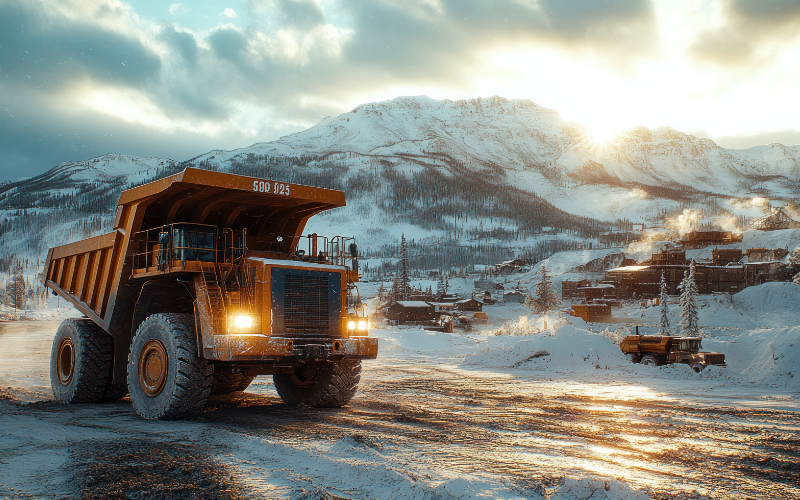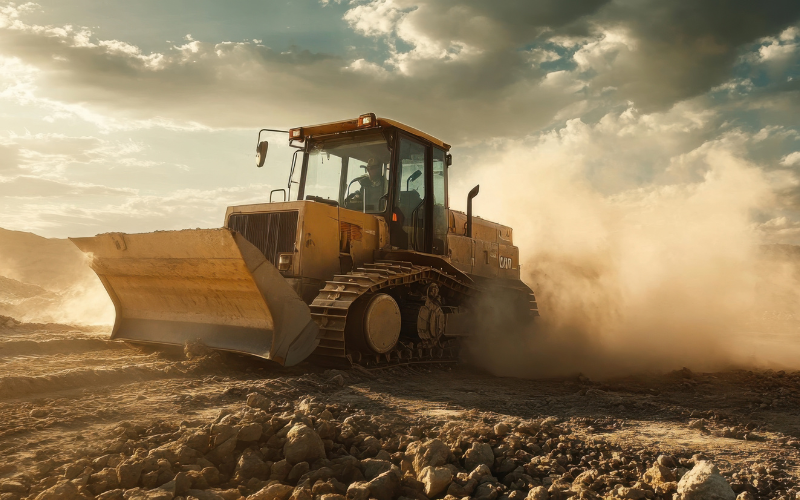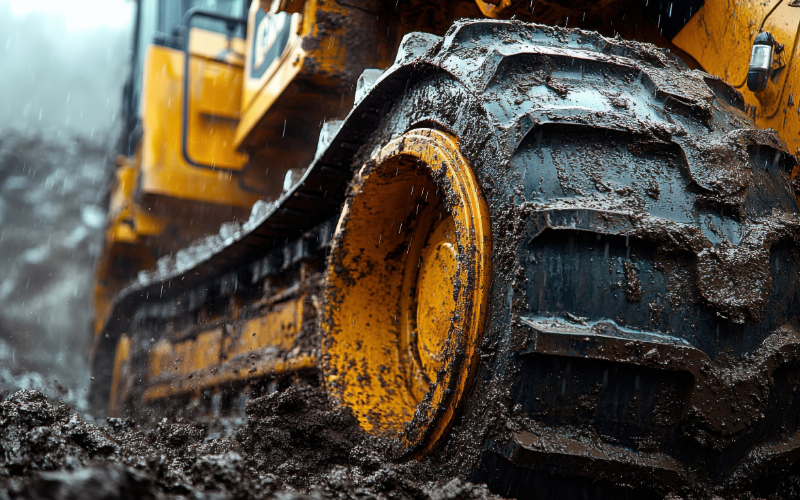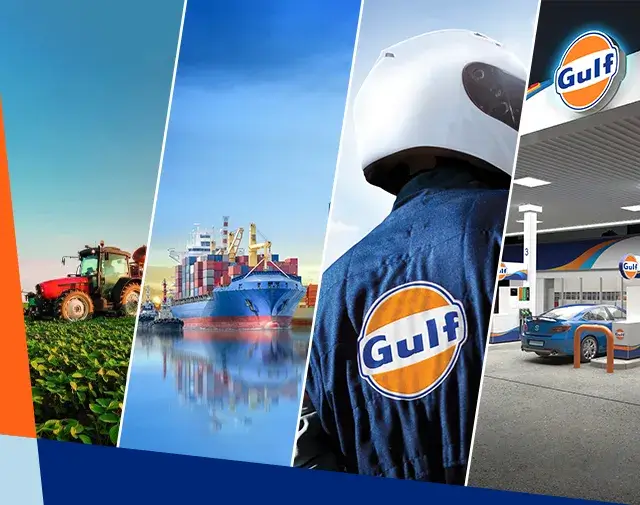Operating in Extreme Conditions: How Lubricants Keep Off-Road Equipment Running
26 Jun 2025

Have you experienced machinery breakdowns in challenging weather conditions? Equipment failures can lead to serious issues when working in harsh climates, including project delays and unsafe working environments. Extremely hot, cold, wet or dusty conditions bring a unique set of challenges surrounding operational efficiency and the reliability of off-road vehicles, so prevention is key.
Lubricants are critical to off-road equipment performance, especially in extreme conditions where failures can pose both safety risks and project delays.
We’ll be exploring the use of lubricants in harsh environments to reduce friction, prevent wear, disperse heat and remove contaminants.
The harsh realities of extreme conditions
Sticking to project deadlines can be tough at the best of times, but extreme environmental conditions add another layer of complexity. Off-road equipment and vehicles are built to withstand heavy-duty wear, but harsh operating environments bring additional stresses. These extreme conditions all put additional strain on off-road machinery and come with their own unique challenges.
Challenges in high-temperature environments
High-temperature environments can put additional stress on your engine and its internal components. Stop-start operating can increase engine temperatures and lead to reduced power and efficiency, as well as overheating.
High temperatures accelerate oxidation, leading to lubricant degradation, viscosity loss, and reduced protective performance.
Protecting equipment from mud, water, and corrosion
Off-road equipment in extreme conditions is often exposed to wet and muddy environments, leading to rust and corrosion. Mud can also dry out rubber seals, causing them to shrink, crack or leak. Meanwhile, water ingress can cause electrical shorts, component and engine damage and hydrolock if it enters the cylinders.
How cold impacts lubricant flow and engine performance
In freezing temperatures, lubricants thicken, making cold starts harder and delaying critical component protection. This can make the engine slow to start as thickened oil can increase friction. Colder climates can also make equipment materials more brittle and susceptible to cracks and breakage.
Preventing abrasive wear in dusty environments
Dust ingress can lead to abrasive wear, clog filters, and impair cooling systems, accelerating component degradation
These are just some of the issues off-road equipment may be exposed to when operating in harsh conditions. The good news is that you can avoid many of them with a proper lubrication strategy.

How specialised lubricants make a difference
Specialised lubricants are formulated to withstand extreme conditions and keep your off-road equipment operating smoothly and efficiently, whatever the weather.
Lubricants suited to high-temperature environments
High-temperature lubricants have a higher oxidation resistance, so they can maintain optimal viscosity, even in hot climates. If a lubricant becomes too thin, it reduces the protection of moving parts which can cause friction and wear.
Synthetic oils vs mineral oils
Synthetic oils have better thermal stability, and are a much stronger choice for off-road vehicles in hot climates. They resist breakdown better than mineral alternatives and offer enhanced wear and protection, which is key.
For example, a 5w40 synthetic oil will be better suited to hot climates than a 5w30 oil because it has a thicker viscosity. However, you should always consult your manufacturer's handbook first.
Dust-resistant lubricants
Lubricants with appropriate viscosity and sealing properties help shield components from airborne particles, especially in exposed applications like joints and bushings.
The importance of maintenance
Regular equipment maintenance is essential for off-road vehicles to prevent wear and tear. Routine inspections, lubricant top-ups, and filter changes are essential to prevent dirt ingress and extend equipment life.
Additives to look for
Look for additives like:
- Anti-wear agents (e.g., zinc dialkyldithiophosphate) to reduce friction
- Dispersants to keep debris in suspension
- Pour point depressants to maintain fluidity in freezing temperatures
- Hydrophobic and corrosion inhibitors to protect against water damage
Lubricants that perform in cold, wet or icy conditions
Low-temperature and water-resistant lubricants reduce friction and help maintain functionality. They offer easier equipment start-up and reduced wear and tear, as well as improved efficiency, providing reliable lubrication, even in freezing temperatures.
Hydrophobic properties
Hydrophobic properties in lubricants repel water, preventing it from penetrating lubricated surfaces and causing corrosion.
Anti-corrosion additives
Water and freezing temperatures can cause corrosion, so antioxidants and corrosion-inhibitor additives can protect components from rust and sludge formation.
Pour point depressants
Pour point depressants allow lubricants to flow at extremely low temperatures and prevent them from freezing. They also modify the waxy structures and prevent them from forming large crystals and clogging filters.
Many lubricants will already include these additives, so be sure to look for them on the ingredient list.

Choosing the right lubricant for your equipment
The right lubricant for your off-road equipment will vary depending on the operating conditions, machinery and OEM specifications. Following your manufacturer’s recommendations is essential to ensure you use appropriate lubricants for your equipment and prolong the lifespan without causing damage.
Lubricant recommendations by condition
|
|
|
|
|
|
|
|
|
|
|
|
|
|
|
Proactive maintenance ensures your off-road equipment is reliable and efficient in challenging conditions. By following your manufacturer's recommended service intervals and introducing regular oil analysis, you can ensure all components are appropriately lubricated at all times.
Keep off-road equipment running smoothly, whatever the weather
Correctly using the right lubricants to maintain your off-road equipment is essential for extending equipment life, minimising damage and reducing downtime. By using the right lubricants, you can preserve critical components and avoid costly delays due to preventable repairs.
Explore our industrial lubricants, designed for extreme conditions, and keep off-road equipment operating at peak performance, no matter the condition.

